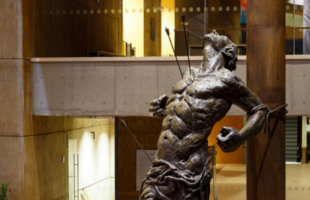 The Museum of Art and History of Guanajuato was inaugurated on November 27, 2008 and is located in the city of León inserted in the visionary project called Forum Cultural Guanajuato, an institution under the government of the state. |
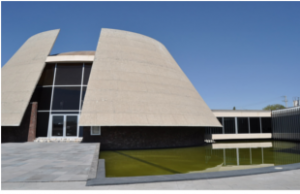 Museum of Art, it housed collections that showed chronologically the stages of Mexican art, from ancient cultures to the latest schools and contemporary trends. |
|
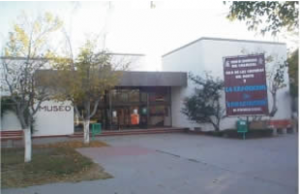 El Chamizal Archaeology Museum, It promotes and spreads the Pre-Hispanic cultures and artistic expressions of the region, the country and the exterior. |
 The Interactive Space Wheel located in Ciudad Juárez, Chihuahua, Mexico, is already one of the largest museums in Latin America; With over 120 … |
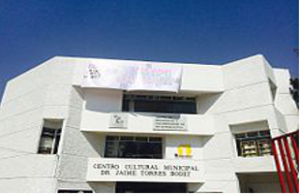 Centro Cultural “Jaime Torres Bodet”-Inaugurated on August 25, 1987. The building has three areas. On the ground floor are workshops, exposition halls and conference rooms… |
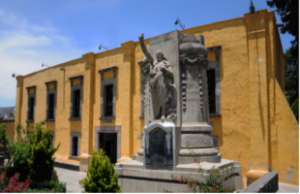 The House of Morelos, also known as Casa de Morelos Community Center is a museum in the municipality of Ecatepec de Morelos , Mexico, dedicated to Jose Maria Morelos y Pavon . |
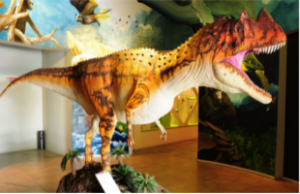 The Museum of Natural History in Ecatepec, was inaugurated by the governor of the state of Mexico, Eruviel Ávila, which becomes one of the first choices of its kind in the metropolitan area of the Valley of Mexico |
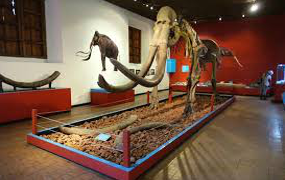 Regional Museum of Guadalajara XVIII century , its construction began around 1742 and concluded 16 years later, and built in stone factory. Its original use was the school-seminary of Lord San José. During the War of Independence it was barracks of the insurgent troops and prison of Spaniards. Address: Calle Liceo 60, Zona Centro, 44100 Guadalajara, Jal., Mexico. Phone: +52 33 3613 2703 |
 The Ripley Museum exhibits one of the largest collections of rare and unusual objects from the places explored by American collector and caricaturist Robert L. Ripley. The Ripley Museum exhibits one of the largest collections of rare and unusual Objects from the places explored by American collector and cartoonist Robert L. Ripley. Address: México, Calle de Morelos 217, 44100 Guadalajara, JAL, Mexico. Phone: +52 33 3614 8487 |
 The Museum of the Arts University of Guadalajara , also known as “MUSA”, is a museum located in the city of Guadalajara , Jalisco . Mexico and was inaugurated on October 10, 1994 , and forms part of the campus of the University of Guadalajara . It has a French Renaissance style. Address: Calle Juárez, 975, Colonia Centro, 44100 Guadalajara, Jal., Mexico. Phone: +52 33 3134 1664 |
 The International Museum of the Baroque is a museum of Baroque art designed by Japanese architect Toyoo Ito located in Puebla, Mexico. It opened on February 4, 2016 |
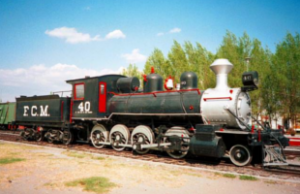 The National Museum of Mexican Railways is an exhibition space that shows the public a historical review of the Railroad , from its beginnings to the present time. It is located in the Historic Center of Puebla , Mexico . |
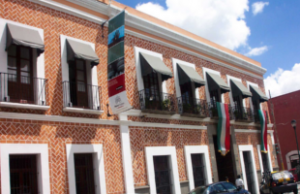 The Amparo Museum, located in the historic center of Puebla, is one of the most important historical museums in Mexico. The museum is housed in two colonial-era buildings that date from the 17th and 18th centuries, which were popularly known as the Hospitalario. One of the buildings was the Hospital de Nuestra Señora y San Juan de Letrán founded in 1534. |
 The Museum of the Californias occupies an area of 2,200 m², is located in the central building of the Tijuana Cultural Center, was inaugurated on February 24, 2000 by the then President of Mexico, Ernesto Zedillo… |
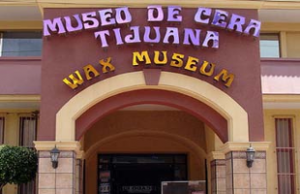 Tijuana Wax Museum– Museum that exhibits a permanent collection of 80 pieces of famous characters from Mexico’s history, literature, cinema and the artistic world, including Ramón Ayala, Pedro Infante… |
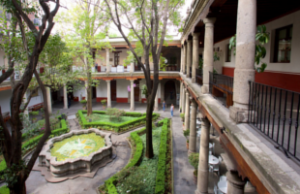 The Franz Mayer Museum, in Mexico City opened in 1986 to house, display and maintain Latin America’s largest collection of decorative arts. The collection was amassed by stockbroker and financial professional Franz Mayer, who collected fine artworks, books, furniture, ceramics, textiles and many other types of decorative items over fifty years of his life. |
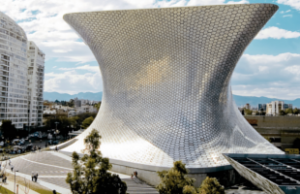 The Museo Soumaya, designed by the Mexican architect Fernando Romero, is a private museum in Mexico City. It is a non-profit cultural institution with two museum buildings in Mexico City - Plaza Carso and Plaza Loreto. It has over 66,000 works from 30 centuries of art including sculptures from Pre-Hispanic Mesoamerica, 19th- and 20th-century Mexican art and an extensive repertoire of works by European old masters and masters of modern western art such as Auguste Rodin. |
 The National Museum of Anthropology is a national museum of Mexico. It is the largest and most visited museum in Mexico. Located in the area between Paseo de la Reforma and Mahatma Gandhi Street within Chapultepec Park in Mexico City |
 The Frida Kahlo Museum, also known as the Blue House for the structure's cobalt-blue walls, is a historic house museum and art museum dedicated to the life and work of Mexican artist Frida Kahlo. It is located in the Colonia del Carmen neighborhood of Coyoacán in Mexico City. |
 The Explora Museum is the museum of the State of Guanajuato . It was created in November 1994. This interactive center aims to promote understanding of the world from a scientific perspective. |
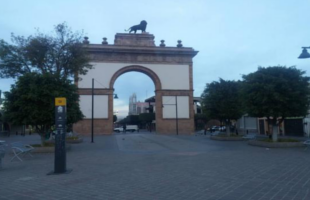 Triumphal Arch walkway Heroes is made in 1893 to commemorate the 83rd anniversary of the Mexican Independence, the arch is crowned by a bronze lion by the sculptor Humberto Peraza. This arch is the symbol of the city. |
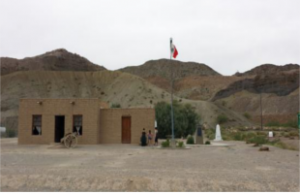 The Adobe House, one of the most interesting historical stages of this American country, penalties rebuilding Adobe House was one of the most notable cultural landmarks of this border city. |
 The Hospicio Cabanas in Guadalajara, Jalisco, Mexico, a World Heritage Site, is one of the oldest and largest hospital complexes in the Americas. The complex was founded in 1791 by the Bishop of Guadalajara in order to combine the functions of a workhouse, hospital, orphanage, and almshouse. Address: Calle Cabanas 8, Las Fresas, 44360 Guadalajara, Jal., Mexico. Phone: +52 33 3668 1642 |
 Expiatory Temple of the Blessed Sacrament is a Catholic church dedicated to the Blessed Sacrament, located in Guadalajara, Jalisco, Mexico. The church is of neo-Gothic style and is considered the greatest work of its kind in Mexico. Its construction began on August 15, 1897 and ended 75 years later in 1972. |
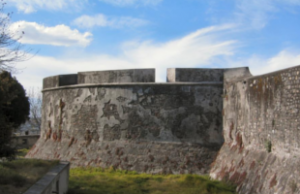 The forts of Loreto and Guadalupe are some old military buildings that are in the city of Puebla . Originally they were chapels built on top of an Acueyametepec hill, which were reconstituted at the beginning of the 19th century as fortifications with military purposes. They served as the main stage in both the battle and the site of Puebla, during the Second French Intervention in Mexico . Declared as Mexico’s historical heritage, they currently house site museums. |
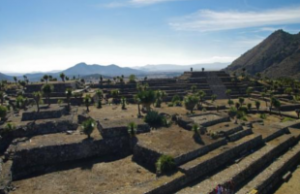 Cantona Archaeological Ruins is a Mesoamerican archaeological site in Mexico. It is located in the state of Puebla, on the border with Veracruz, about an hour’s drive from the city of Puebla and about an hour and a half from Xalapa, Veracruz. Limited archaeological work has been done at the site, and only about 10{299b47ec89be613b0a7aed940fbd548d508d4508236ae5619b8b0d65b95337f7} of the site can be seen. |
 Ex Convento de Tecali is Located in the central part of the state and taking the interstate highway to Tepeaca. It is an important exconvento that at the moment is in ruins. This architectural ensemble presents the most beautiful covers of the Renaissance style. |
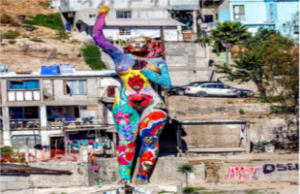 La casa de la Mona, is a house built and lived in by a local Tijuana artist , Armando Muñoz García. Garcia raised the 18 ton structure to commemorate the city’s spirit on its centenary and modeled it after his sweetheart. |
|












